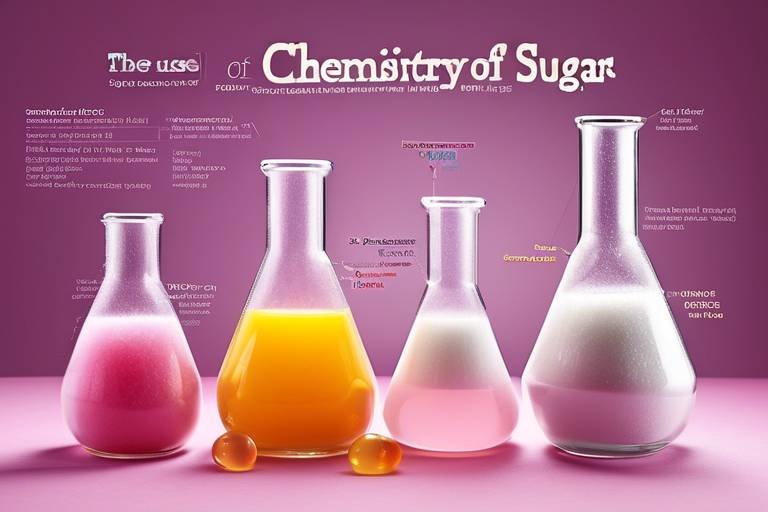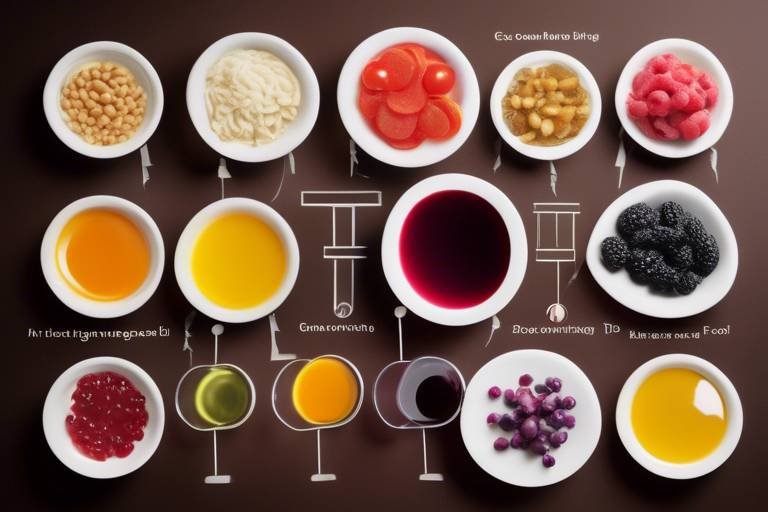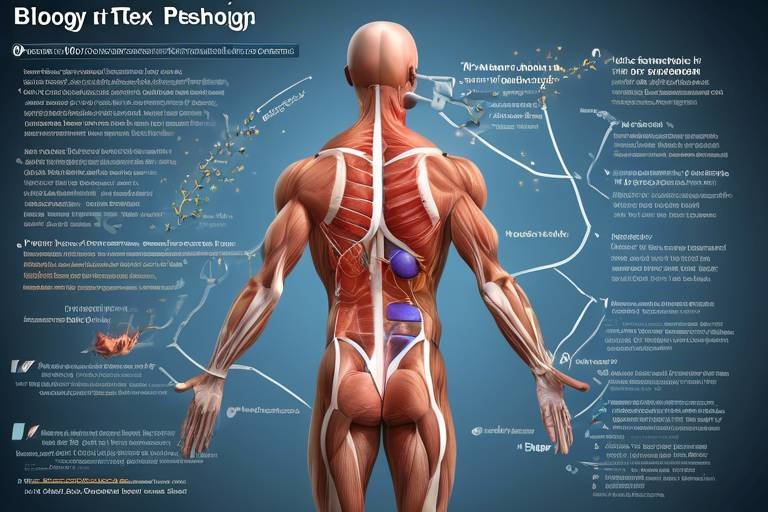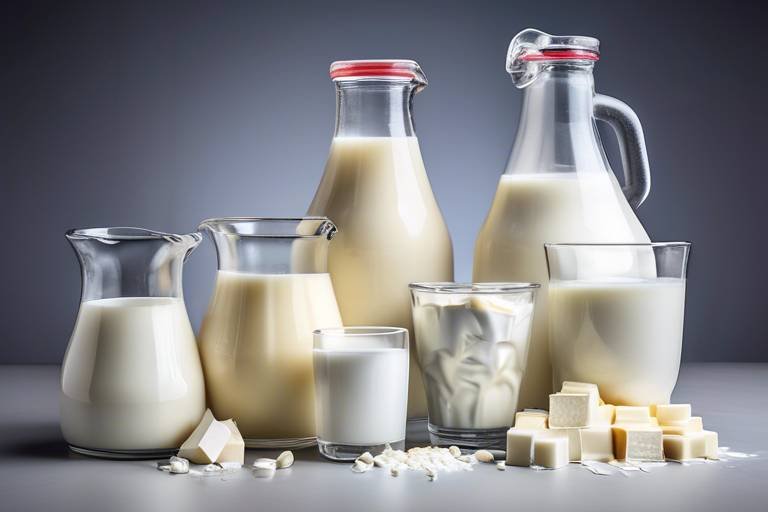The Chemistry of Sugars - Understanding Sweetness
Welcome to the sweet world of sugars! Have you ever wondered what makes that piece of chocolate melt in your mouth or why fruits taste so deliciously sweet? Well, the answer lies in the fascinating chemistry of sugars. Sugars, also known as carbohydrates, play a crucial role in our diets and are responsible for the delightful sweetness we experience in many foods. But there’s so much more to them than just their taste! In this article, we’ll dive deep into the different types of sugars, their structures, and how they influence our health and metabolism.
To kick things off, let’s explore the various types of sugars that exist. Sugars can be categorized into three main types: monosaccharides, disaccharides, and polysaccharides. Each type has its unique structure and function, impacting not only how sweet they taste but also how our bodies process them. So, whether you’re enjoying a sugary treat or savoring the natural sweetness of fruits, understanding these sugars will give you a whole new appreciation for what you’re consuming.
Now, you might be wondering why we even need sugars in our diets. Well, sugars are our body's primary source of energy! They break down into glucose, which fuels our cells and keeps us active throughout the day. However, moderation is key. Too much sugar can lead to various health issues, including obesity and diabetes. So, while it’s okay to indulge every now and then, being mindful of our sugar intake is essential for maintaining a healthy lifestyle.
In the sections that follow, we’ll delve into the nitty-gritty of each sugar type. We’ll start with monosaccharides, the simplest form of sugars, which consist of single sugar molecules. These little powerhouses include glucose and fructose, each with its unique properties and health implications. For instance, did you know that glucose is often referred to as the "energy currency" of our body? It’s what keeps us going! On the other hand, fructose is the sweetest sugar and is found naturally in fruits. But beware, its high sweetness can sometimes lead to overconsumption, especially in processed foods.
After that, we’ll move on to disaccharides, which are formed by two monosaccharide units. Common examples include sucrose (table sugar) and lactose (found in milk). Each of these sugars plays a significant role in our diets, providing sweetness and energy, but they can also have different effects on our bodies. For instance, lactose intolerance is a common condition where individuals have difficulty digesting lactose, leading to discomfort.
As we explore the sweetness scale, we’ll compare the sweetness levels of various sugars and artificial sweeteners. Ever wondered how stevia stacks up against table sugar? Or what about the health implications of consuming too much aspartame? We’ll cover all that and more, providing you with a comprehensive understanding of how our taste buds perceive sweetness.
Finally, we’ll take a look at natural sweeteners like honey and agave syrup. These alternatives are becoming increasingly popular as people seek healthier options. But are they really better for you? We’ll weigh the benefits against the drawbacks, helping you make informed choices about your sweeteners.
So, buckle up as we embark on this sweet journey through the chemistry of sugars! Whether you’re a health enthusiast or a sweet tooth, there’s something here for everyone. Let’s get started!
- What are the main types of sugars? The main types of sugars are monosaccharides, disaccharides, and polysaccharides.
- How do sugars impact our health? While sugars provide energy, excessive intake can lead to health issues like obesity and diabetes.
- What is the sweetest sugar? Fructose is known to be the sweetest of all sugars.
- Are natural sweeteners healthier than regular sugar? Natural sweeteners can be healthier options, but it's essential to consider their nutritional content and how they affect your body.
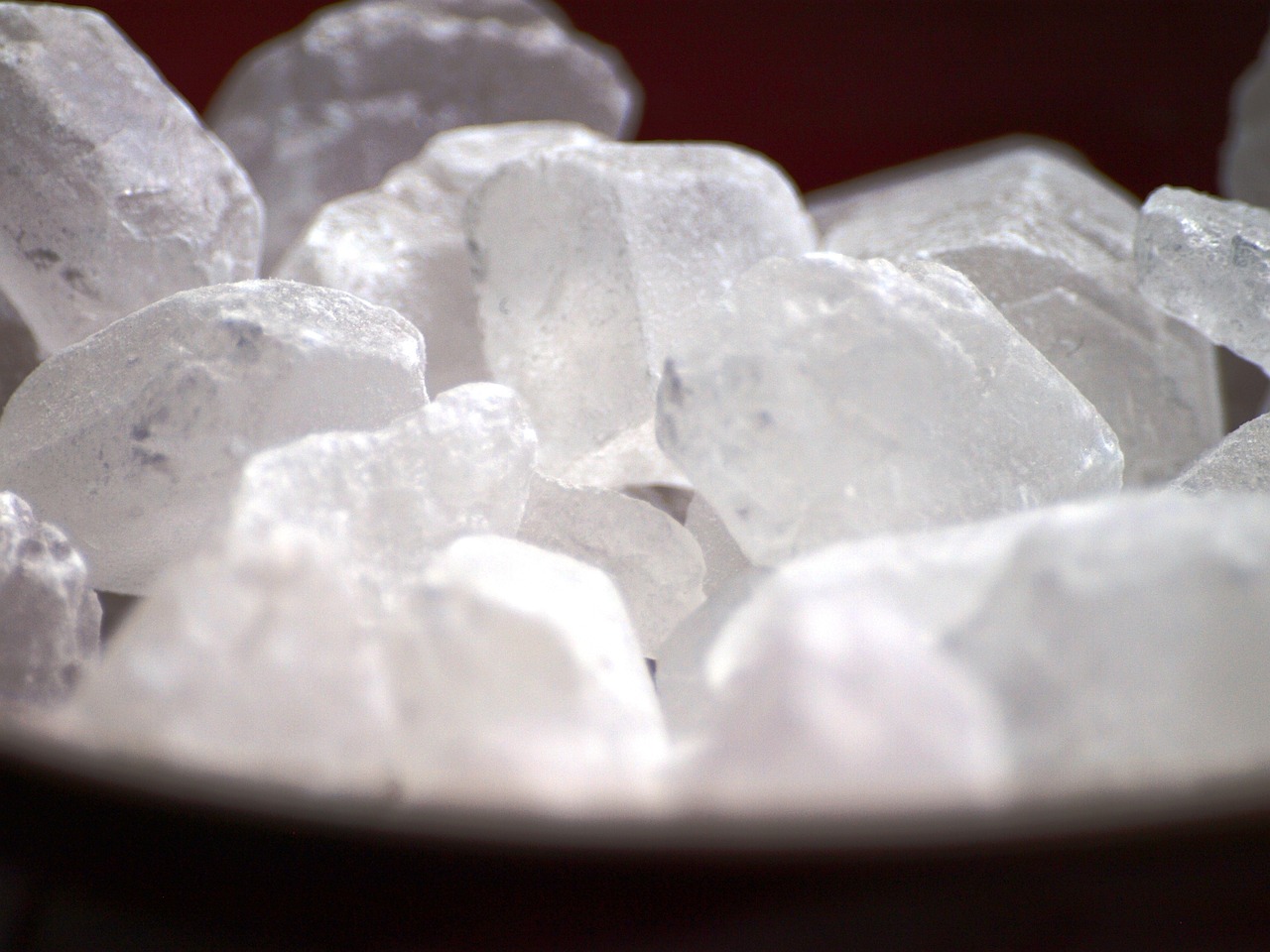
Types of Sugars
When it comes to sugars, the world is a bit like a candy store—full of varieties, each with its own unique characteristics and flavors. Sugars can be broadly categorized into three main types: monosaccharides, disaccharides, and polysaccharides. Understanding these categories is essential, as each type plays a distinct role in our diets and affects sweetness and metabolism in different ways.
Monosaccharides are the simplest form of sugars, consisting of single sugar molecules. They are the building blocks for more complex sugars and are easily absorbed by the body. Common examples include glucose and fructose. Glucose, often referred to as blood sugar, is crucial for energy production, while fructose, found in fruits, is known for its exceptionally sweet taste.
Moving on to disaccharides, these consist of two monosaccharide units linked together. Think of them as pairs of dancers gliding across the stage of our digestive system. Common examples include sucrose (table sugar) and lactose (the sugar found in milk). Sucrose is derived from sugar cane or sugar beets, while lactose is naturally present in dairy products. Each disaccharide has its own unique flavor profile and is metabolized differently in the body.
Finally, we have polysaccharides, which are long chains of monosaccharide units. These complex sugars are often referred to as starches and fibers. They play a significant role in our diets by providing sustained energy and aiding digestion. Foods rich in polysaccharides include whole grains, legumes, and vegetables. Unlike simple sugars, polysaccharides break down slowly, offering a more gradual release of energy, which helps maintain stable blood sugar levels.
To summarize, here's a quick overview of the types of sugars:
| Type of Sugar | Examples | Characteristics |
|---|---|---|
| Monosaccharides | Glucose, Fructose | Simple sugars, easily absorbed |
| Disaccharides | Sucrose, Lactose | Two sugar molecules, varied flavors |
| Polysaccharides | Starch, Fiber | Complex sugars, slow digestion |
In conclusion, the types of sugars we encounter daily are diverse and fascinating. Each type has its own unique properties and impacts our bodies in different ways. By understanding these sugars, we can make informed choices about our diets and enjoy the sweetness of life while maintaining a healthy balance.

The Role of Sugars in the Body
When it comes to our bodies, sugars play a crucial role that goes beyond just making our food taste sweet. Sugars are a form of carbohydrates, and they serve as a primary energy source for our cells. Imagine your body as a car; just like a car needs fuel to run, our bodies need sugars to function optimally. So, how exactly do sugars contribute to our overall well-being?
First off, sugars are broken down into glucose during digestion. This glucose enters the bloodstream and is transported to cells where it is used for energy. Think of glucose as the gasoline that powers your vehicle. Without it, your body would struggle to perform even the simplest tasks. But, it’s not just about energy; sugars also play a significant role in various metabolic processes. They are involved in synthesizing important molecules that our bodies need to function properly.
However, it’s essential to consider how sugars affect our blood sugar levels. When we consume sugars, especially in large amounts, we experience a spike in blood sugar. This can lead to a surge of energy followed by a crash, leaving us feeling tired and sluggish. Over time, excessive sugar intake can contribute to health issues like obesity, type 2 diabetes, and heart disease. Therefore, moderation is key. It’s like walking a tightrope; too much sugar can lead to serious health risks, while too little can leave you feeling drained.
To better understand the impact of sugar on our bodies, let’s take a look at how different types of sugars are metabolized:
| Type of Sugar | Metabolism | Energy Impact |
|---|---|---|
| Monosaccharides | Quickly absorbed into the bloodstream | Immediate energy boost |
| Disaccharides | Requires enzymatic breakdown | Gradual energy release |
| Polysaccharides | Slow digestion and absorption | Sustained energy over time |
As you can see from the table, monosaccharides provide an immediate energy boost, making them ideal for quick refueling during intense activities. On the other hand, polysaccharides offer a more sustained energy release, which is beneficial for endurance. This balance is vital for maintaining energy levels throughout the day.
In conclusion, while sugars are essential for energy and overall health, it’s crucial to consume them wisely. Understanding how sugars work in our bodies can empower us to make better dietary choices. So, the next time you reach for that sugary snack, consider how it will fuel your body and how it fits into your overall health goals.
- What is the difference between natural and added sugars? Natural sugars are found in whole foods like fruits and vegetables, while added sugars are incorporated during processing or preparation.
- How much sugar should I consume daily? The American Heart Association recommends limiting added sugars to about 6 teaspoons for women and 9 teaspoons for men per day.
- Can I completely eliminate sugar from my diet? While it’s not necessary to eliminate sugar entirely, reducing added sugars can lead to better health outcomes.
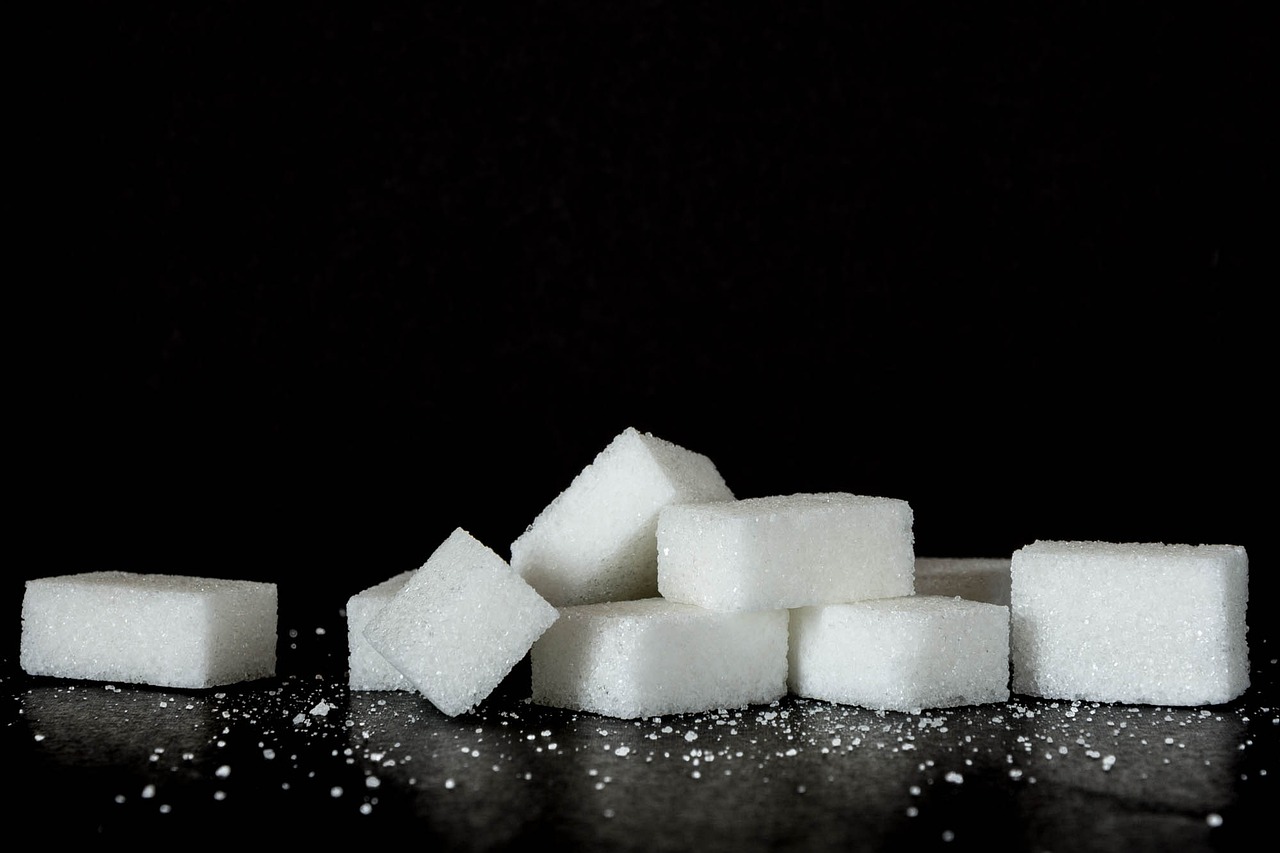
Monosaccharides Explained
Monosaccharides are the simplest form of sugars, and they play a crucial role in our diet and metabolic processes. These single sugar molecules are the building blocks for more complex carbohydrates. Think of them as the Lego pieces of the sugar world; they can combine in various ways to form disaccharides and polysaccharides, which are more complex sugars. The most notable monosaccharides include glucose, fructose, and galactose. Each of these sugars has unique properties and functions that influence their sweetness and how our bodies utilize them.
Let's take a closer look at the two most common monosaccharides: glucose and fructose. Glucose, often referred to as blood sugar, is essential for providing energy to our cells. It is found in many foods, especially carbohydrates, and is readily absorbed into the bloodstream. When you eat a piece of fruit or a slice of bread, glucose is one of the primary sugars your body breaks down and uses for energy. On the other hand, fructose is known for its remarkable sweetness; it is found in fruits, honey, and root vegetables. While fructose is sweet and enjoyable, it is metabolized differently than glucose, primarily in the liver, which can lead to various health implications if consumed in excess.
To illustrate the differences and similarities between these monosaccharides, let's look at their structures in the table below:
| Monosaccharide | Chemical Formula | Sweetness Level | Sources |
|---|---|---|---|
| Glucose | C6H12O6 | Moderate | Fruits, honey, starches |
| Fructose | C6H12O6 | High | Fruits, honey, root vegetables |
| Galactose | C6H12O6 | Low | Milk, dairy products |
As you can see, while glucose and fructose share the same chemical formula, their sweetness levels and sources differ significantly. This distinction is crucial when considering your dietary choices. Understanding these sugars can help you make informed decisions about what you eat and how it affects your body. For instance, while fruits are a natural source of sweetness due to their fructose content, they also provide essential vitamins and minerals that processed sugars lack. Thus, opting for whole fruits instead of sugary snacks can be a healthier choice.
In summary, monosaccharides are not just simple sugars; they are vital components of our diet that influence our energy levels and overall health. By understanding their unique characteristics, you can better navigate your dietary choices and enjoy a balanced approach to sweetness in your life.
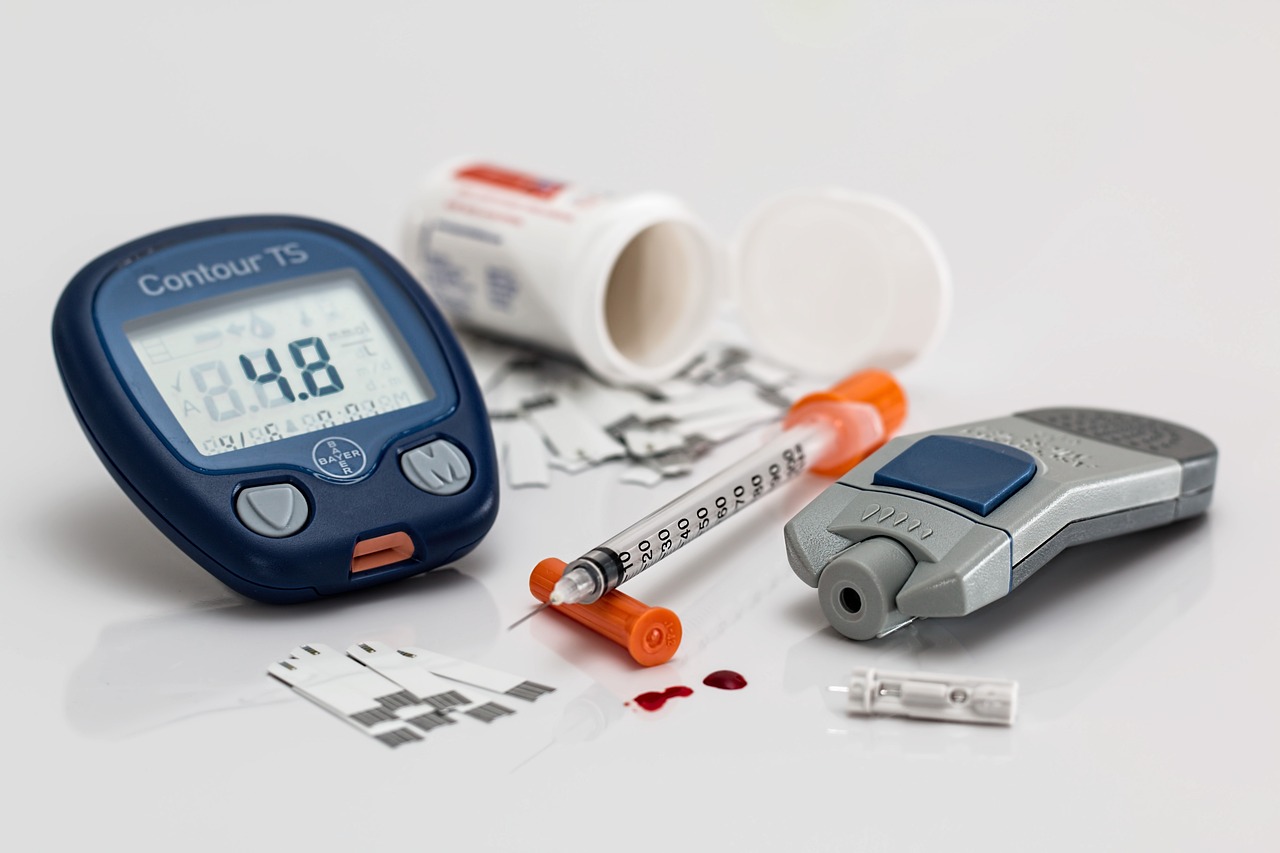
Glucose: The Energy Source
Glucose is often referred to as the body's primary energy source, acting like the fuel that keeps our engines running. Imagine your body as a high-performance sports car; glucose is the premium gasoline that powers it. When we consume carbohydrates, our digestive system breaks them down into glucose, which then enters our bloodstream. This process is crucial because our cells rely on glucose to produce adenosine triphosphate (ATP), the molecule that stores and transfers energy within cells.
Once glucose is in the bloodstream, it can be transported to various tissues and organs where it's needed most. For example, your brain, which is a major consumer of glucose, uses it to perform countless functions, from thinking and problem-solving to regulating your mood. In fact, the brain accounts for about 20% of the body's total energy expenditure, making glucose vital for cognitive function.
However, not all glucose is created equal. The rate at which glucose enters the bloodstream can vary depending on the type of carbohydrate consumed. Simple carbohydrates, like those found in candy and sugary drinks, cause a rapid spike in blood sugar levels, leading to a quick burst of energy followed by a potential crash. On the other hand, complex carbohydrates, such as whole grains and legumes, release glucose more slowly, providing a steady supply of energy over time.
To illustrate this difference, here's a quick comparison:
| Type of Carbohydrate | Example | Effect on Blood Sugar |
|---|---|---|
| Simple Carbohydrates | Candy, soda | Rapid spike |
| Complex Carbohydrates | Whole grains, legumes | Steady release |
It's important to note that while glucose is essential for energy, moderation is key. Too much glucose can lead to elevated blood sugar levels, which over time may contribute to health issues like diabetes and obesity. Therefore, maintaining a balanced diet that includes a variety of carbohydrate sources is crucial for optimal health.
In summary, glucose is more than just a sweet treat; it's a fundamental component of our metabolism and energy production. By understanding how glucose works within our bodies, we can make informed dietary choices that support our energy needs and overall well-being.
- What is the difference between glucose and other sugars? Glucose is a monosaccharide, while other sugars like sucrose and lactose are disaccharides or polysaccharides. Glucose is often used directly by the body for energy.
- How does the body regulate blood sugar levels? The body uses hormones like insulin and glucagon to maintain blood sugar levels within a healthy range, ensuring that cells receive the energy they need without causing spikes.
- Can I have too much glucose in my diet? Yes, excessive glucose intake can lead to health problems such as insulin resistance, obesity, and type 2 diabetes. It's important to consume it in moderation.
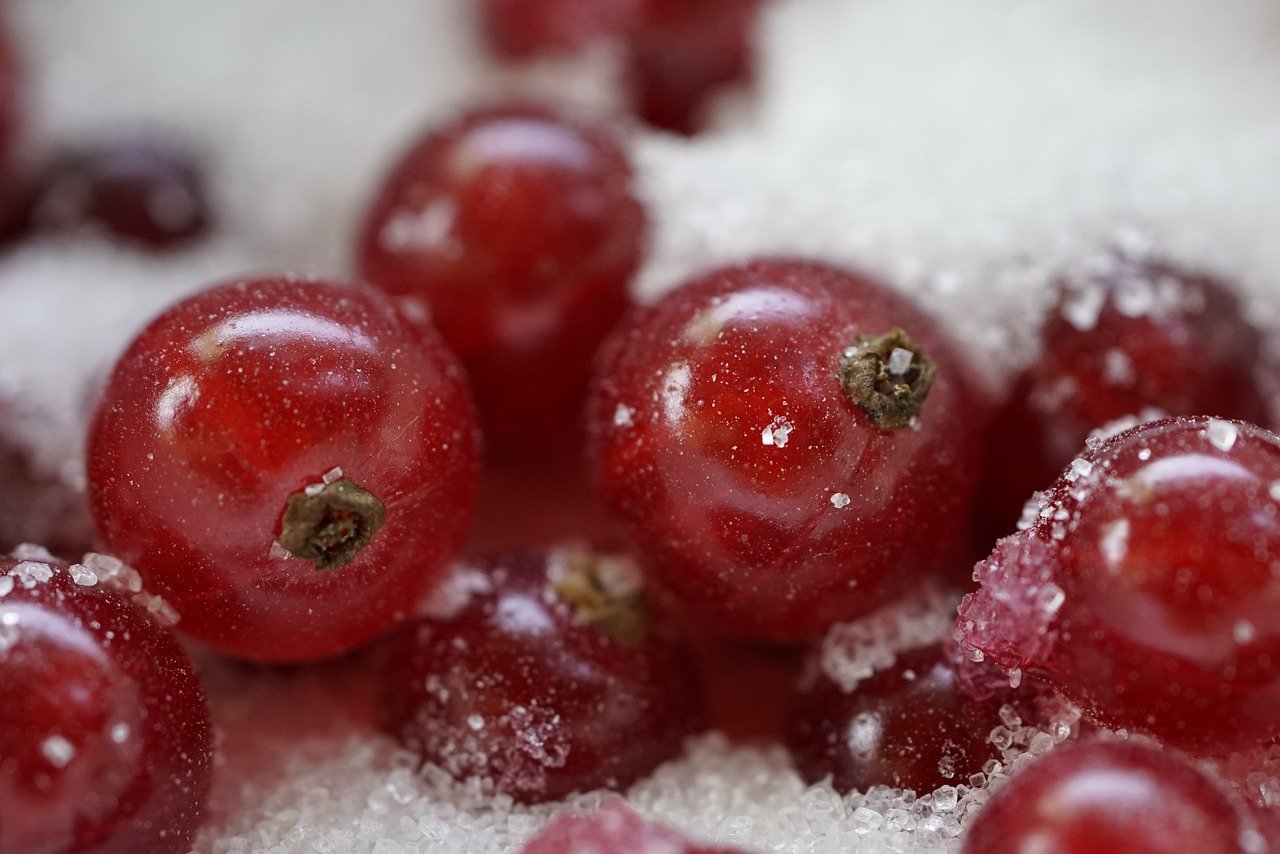
Fructose: The Sweetest Sugar
Fructose is often hailed as the sweetest sugar found in nature, and it's no surprise why! This simple sugar, or monosaccharide, is primarily found in fruits, honey, and root vegetables. When you take a bite of a juicy apple or a ripe pear, it's the fructose that gives you that delightful sweetness. But what makes fructose so special, and how does it differ from other sugars like glucose?
To understand fructose, it's essential to dive into its chemical structure. Fructose has a unique arrangement of atoms that gives it a higher sweetness level compared to glucose. In fact, fructose is about 1.5 times sweeter than sucrose (table sugar). This characteristic has led to its widespread use in the food industry, especially in the form of high-fructose corn syrup, which is commonly found in sodas and processed foods.
But how does our body process fructose? Unlike glucose, which is readily absorbed into the bloodstream, fructose is metabolized in the liver. This means that it doesn't cause a rapid spike in blood sugar levels, making it a popular choice for those looking to manage their glucose intake. However, this unique metabolism can also lead to some health concerns. Excessive consumption of fructose has been linked to fatty liver disease, obesity, and insulin resistance, making moderation key.
So, where can you find fructose in your diet? Here’s a quick breakdown of common sources:
- Fruits: Apples, pears, and cherries are all high in fructose.
- Honey: This natural sweetener contains a significant amount of fructose.
- Root Vegetables: Beets and sweet potatoes also provide fructose.
- Processed Foods: Many snacks and beverages contain high-fructose corn syrup.
While fructose can enhance the sweetness of foods, it's crucial to be aware of how much we're consuming. Natural sources like fruits come packed with vitamins, minerals, and fiber, making them a healthier option. On the other hand, processed foods laden with high-fructose corn syrup can lead to overconsumption and subsequent health issues. It's all about finding that balance in your diet!
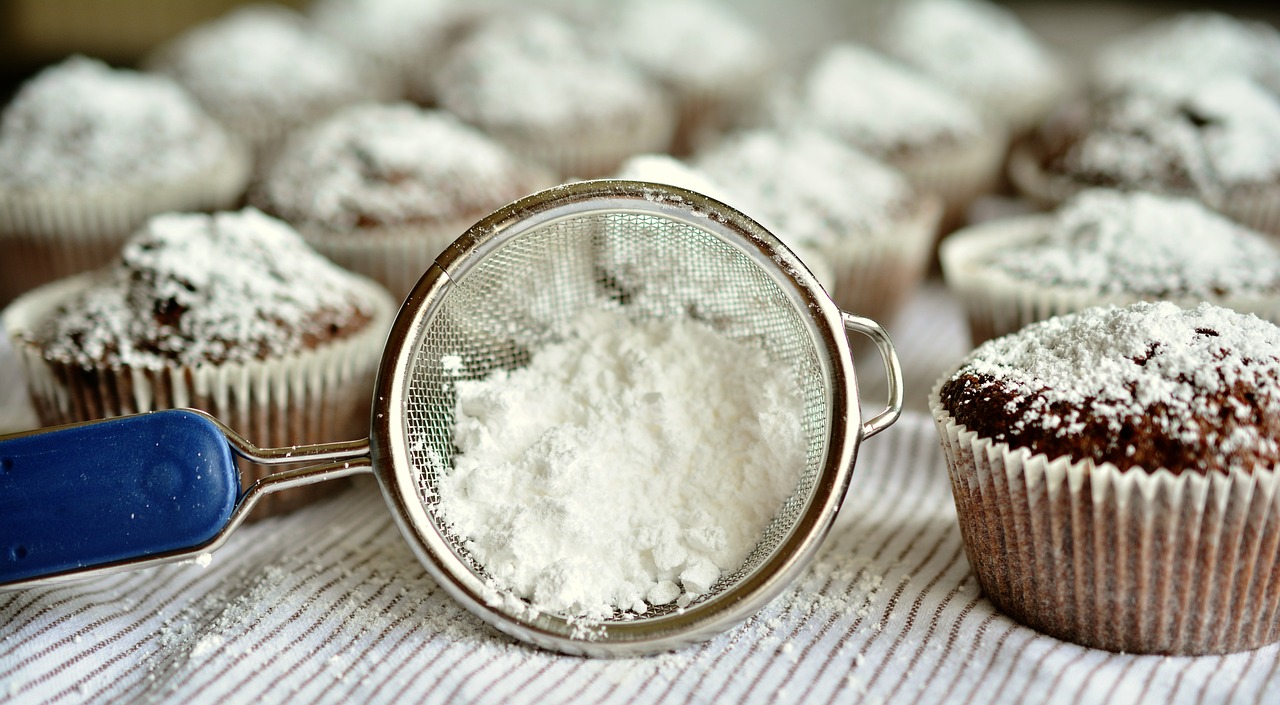
Disaccharides and Their Functions
Disaccharides are fascinating compounds that play a significant role in our diets and metabolism. Comprising two monosaccharide units linked together, these sugars are not just mere sweeteners; they are vital for energy production and various bodily functions. The most common disaccharides include sucrose, lactose, and maltose. Each of these sugars is unique in its composition and effects on the body.
Sucrose, often referred to as table sugar, is a combination of glucose and fructose. It is primarily derived from sugarcane and sugar beets and is widely used in cooking and food production. When consumed, sucrose is broken down into its constituent monosaccharides, providing a quick source of energy. However, it's essential to consume it in moderation, as excessive intake can lead to health issues such as obesity and diabetes.
Another important disaccharide is lactose, which is found in milk and dairy products. Lactose consists of glucose and galactose and is unique in that it requires the enzyme lactase for digestion. Many people experience lactose intolerance, where their bodies do not produce enough lactase, leading to discomfort when consuming dairy products. Interestingly, lactose also serves as a source of energy for infants, making it crucial during early development.
Maltose, often known as malt sugar, is composed of two glucose units. It is formed during the digestion of starch and is commonly found in malted foods and beverages, such as beer and malted milk. Maltose plays a role in energy metabolism, especially in athletes who require quick energy replenishment. The body breaks down maltose into glucose, which can be rapidly utilized for energy.
To summarize the roles of these disaccharides, let's take a look at the following table:
| Disaccharide | Composition | Sources | Function |
|---|---|---|---|
| Sucrose | Glucose + Fructose | Sugarcane, Sugar Beets | Quick energy source |
| Lactose | Glucose + Galactose | Milk, Dairy Products | Energy for infants, digestion requires lactase |
| Maltose | Glucose + Glucose | Malted foods, Beer | Energy metabolism, quick energy release |
Understanding these disaccharides helps us appreciate their importance in our diets. They are not just sweeteners but also integral to our energy systems. However, awareness of how they affect our health is crucial. Moderation and knowledge about the sources of these sugars can lead to healthier dietary choices.

The Sweetness Scale
The sweetness scale is a fascinating concept that helps us understand just how sweet different sugars and sweeteners can be. Imagine walking into a candy store—each sweet treat has its own unique flavor profile, and some are more intense than others. This scale not only compares natural sugars like sucrose and fructose but also dives into the realm of artificial sweeteners, which can be several hundred times sweeter than traditional sugars. But how do we measure this sweetness? It all comes down to the perception of our taste buds and the chemical structures of these compounds.
At the top of the sweetness scale, we find fructose, which is often regarded as the sweetest naturally occurring sugar. It can be found in fruits and honey, and its sweetness can be up to 1.5 times that of sucrose. Following closely behind is glucose, which is less sweet but still plays a crucial role in our diets. Then there’s sucrose—the common table sugar that many of us are familiar with. It serves as a benchmark for sweetness, with a relative sweetness value of 1.0.
To give you a clearer picture, here’s a simple table that compares the sweetness levels of various sugars and artificial sweeteners:
| Sugar/Sweetener | Sweetness Level (Relative to Sucrose) |
|---|---|
| Fructose | 1.5 |
| Sucrose | 1.0 |
| Glucose | 0.7 |
| Stevia | 50-300 |
| Aspartame | 200 |
As you can see from the table, artificial sweeteners like stevia and aspartame can provide a sweetness level that far exceeds that of traditional sugars. This high sweetness means you can use less of these sweeteners to achieve the same level of sweetness, which is why they are often marketed as calorie-free alternatives. However, this brings us to an interesting question: how does our body react to these intensely sweet compounds?
While the sweetness scale is a great tool for understanding how different sugars and sweeteners compare, it also opens the door to discussions about health implications. For instance, while some people may enjoy the taste of artificial sweeteners, others might experience adverse reactions or prefer the taste of natural sugars. It’s crucial to listen to your body and make informed choices about what you consume.
In conclusion, the sweetness scale is not just about numbers; it’s about our experience with food and how sweetness affects our choices. As we navigate through various types of sugars and sweeteners, understanding their relative sweetness can empower us to make better dietary decisions. So the next time you reach for that sugary treat, think about where it falls on the sweetness scale and what that might mean for your health!
- What is the sweetest sugar? Fructose is considered the sweetest naturally occurring sugar.
- How do artificial sweeteners compare to natural sugars? Artificial sweeteners can be significantly sweeter than natural sugars, often requiring smaller amounts to achieve the same sweetness level.
- Are artificial sweeteners safe to consume? While many studies suggest they are safe, it's essential to consume them in moderation and consult with a healthcare professional if you have concerns.
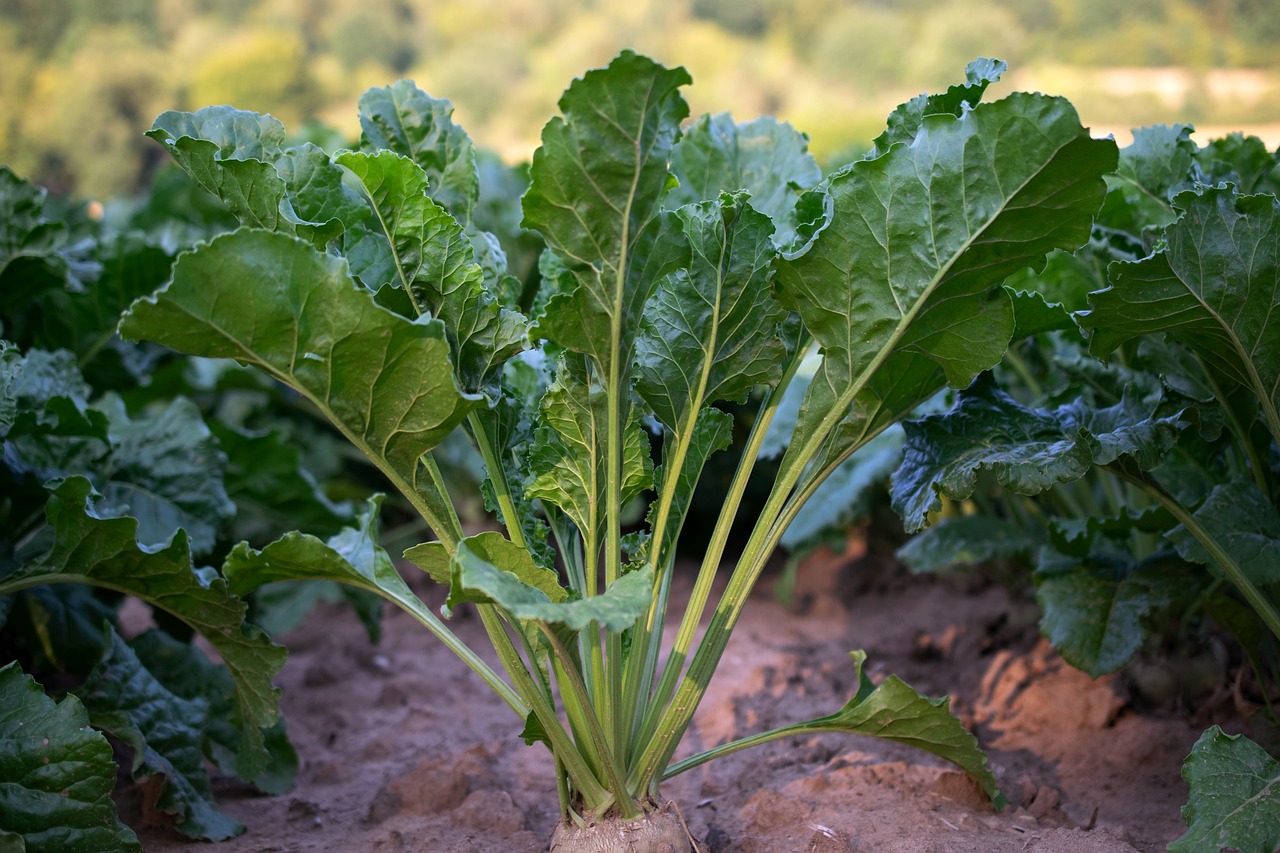
Artificial Sweeteners
Artificial sweeteners have become a popular topic in the world of nutrition and health. These synthetic sugar substitutes are designed to provide the sweetness we crave without the accompanying calories of traditional sugars. Imagine enjoying your favorite desserts without worrying about the sugar crash that often follows! However, the chemistry behind these sweeteners is quite fascinating and complex.
One of the most commonly used artificial sweeteners is aspartame. It is approximately 200 times sweeter than sucrose, which is table sugar, meaning you need just a tiny amount to achieve the desired sweetness. Aspartame is made from two amino acids, aspartic acid and phenylalanine, making it a low-calorie option for those looking to cut sugar from their diets. However, it’s important to note that individuals with a rare genetic disorder called phenylketonuria (PKU) must avoid aspartame due to its phenylalanine content.
Another popular choice is sucralose, which is about 600 times sweeter than sugar. It is derived from sugar itself but is modified through a process that replaces three hydroxyl groups with chlorine atoms. This alteration makes sucralose indigestible, meaning it passes through the body without contributing calories. It’s often marketed under the brand name Splenda and can be used in cooking and baking, making it a versatile option for many.
Despite their convenience, artificial sweeteners have sparked an ongoing debate regarding their safety and health implications. Some studies suggest that they may lead to increased cravings for sweet foods, potentially causing weight gain rather than weight loss. Others argue that they can help people manage their sugar intake and reduce calorie consumption. This conflicting information can leave consumers feeling confused about what to believe.
Here’s a quick comparison of some common artificial sweeteners:
| Sweetener | Sweetness Relative to Sugar | Calories | Common Uses |
|---|---|---|---|
| Aspartame | 200 times sweeter | 4 calories per gram (but used in such small amounts, it's negligible) | Soft drinks, desserts |
| Sucralose | 600 times sweeter | 0 calories | Baking, cooking, beverages |
| Saccharin | 300-400 times sweeter | 0 calories | Tabletop sweetener, processed foods |
While artificial sweeteners can be a useful tool for managing sugar intake, moderation is key. Relying solely on these sweeteners may not be the best approach for everyone. Instead, consider them as part of a broader strategy that includes whole foods and natural sweeteners. Always consult with a healthcare professional if you have concerns about incorporating artificial sweeteners into your diet.
- Are artificial sweeteners safe to consume? Yes, most artificial sweeteners are considered safe for the general population when consumed within the acceptable daily intake levels.
- Do artificial sweeteners cause weight gain? Some research suggests that they may lead to increased cravings for sweet foods, but results can vary from person to person.
- Can I use artificial sweeteners in baking? Many artificial sweeteners can be used in baking, but their sweetness levels and chemical properties can affect the final product.
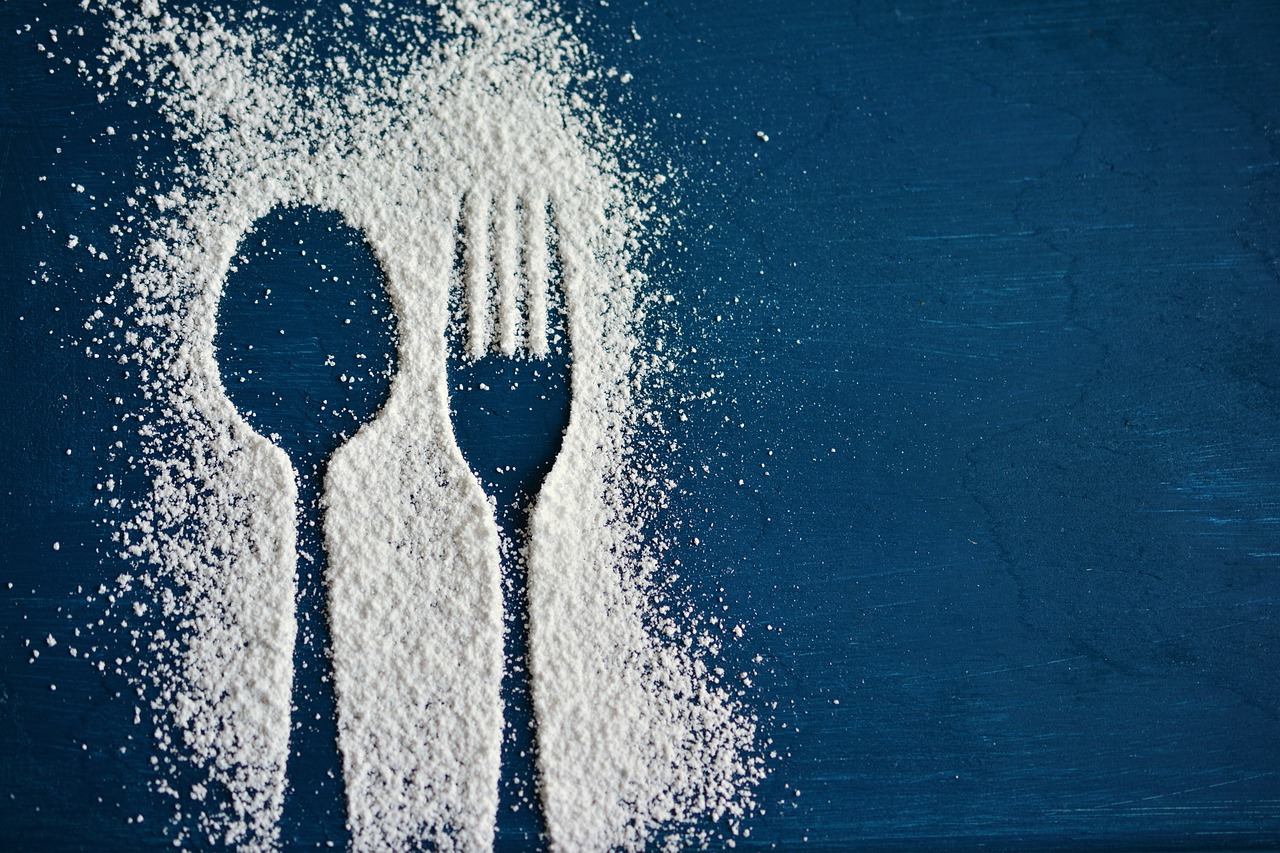
Natural Sweeteners
When it comes to sweetening our foods, many of us are looking for alternatives to traditional table sugar. This is where come into play. These sweeteners, derived from plants and other natural sources, not only satisfy our sweet tooth but also often come with additional health benefits. Imagine swapping out that sugary soda for a refreshing drink sweetened with honey or maple syrup—not only does it taste great, but it also feels like a step toward a healthier lifestyle.
Natural sweeteners can be a great option for those looking to reduce their refined sugar intake. They typically contain more nutrients than processed sugars and have a lower glycemic index, which means they can have a gentler impact on blood sugar levels. However, it's essential to remember that moderation is key, even with these healthier alternatives. Just because something is natural doesn't mean it’s calorie-free!
Some popular natural sweeteners include:
- Honey: This golden liquid is not just sweet; it also has antibacterial properties and contains antioxidants. It’s great in tea or drizzled over yogurt.
- Maple Syrup: Extracted from the sap of maple trees, this syrup is rich in minerals like manganese and zinc. It adds a unique flavor to pancakes and baked goods.
- Agave Nectar: Sweeter than sugar, agave nectar has a low glycemic index. However, it’s high in fructose, so it’s best to use it sparingly.
- Coconut Sugar: Made from the sap of coconut palm trees, this sweetener retains some nutrients from the coconut and has a caramel-like flavor.
In addition to these, stevia is another natural sweetener that has gained popularity in recent years. Derived from the leaves of the stevia plant, it’s incredibly sweet yet has zero calories. This makes it a favorite for those looking to cut down on sugar without sacrificing sweetness. However, some people find that stevia has a slightly bitter aftertaste, which can be a deal-breaker for some.
It's fascinating to note how different natural sweeteners can affect our bodies. For instance, while honey can provide a quick energy boost, agave nectar may be more suitable for those looking to maintain stable blood sugar levels over time. It’s almost like choosing between a quick sprint and a long, steady jog—each has its benefits depending on your goals.
As you explore the world of natural sweeteners, consider trying them in various recipes. You might be surprised at how well they can replace refined sugar in your favorite dishes. Whether you're baking, cooking, or simply sweetening your morning coffee, these natural alternatives can add flavor and health benefits to your meals.
In summary, natural sweeteners offer a delightful way to enjoy sweetness without the downsides of processed sugars. They can enhance your culinary creations while contributing positively to your health when used wisely. So, next time you're at the grocery store, consider reaching for one of these natural options instead of the usual sugar. Your taste buds—and your body—might just thank you!
1. Are natural sweeteners healthier than regular sugar?
While many natural sweeteners contain beneficial nutrients and have a lower glycemic index, they still contain calories and sugars. Moderation is key.
2. Can natural sweeteners be used in baking?
Yes! Many natural sweeteners can be substituted for regular sugar in baking, but you may need to adjust the quantities and cooking times.
3. Do natural sweeteners have an aftertaste?
Some natural sweeteners, like stevia, can have a slight aftertaste that some people find unappealing. It's best to try different types to see what you prefer.
4. Are natural sweeteners safe for diabetics?
Many natural sweeteners have a lower glycemic index, making them suitable for diabetics. However, it’s essential to consult with a healthcare provider before making any changes to your diet.
Frequently Asked Questions
- What are the different types of sugars?
There are three main types of sugars: monosaccharides, disaccharides, and polysaccharides. Monosaccharides, like glucose and fructose, are the simplest form, consisting of single sugar molecules. Disaccharides are made up of two monosaccharide units, such as sucrose (table sugar) and lactose (found in milk). Polysaccharides, like starch and fiber, are complex sugars made of long chains of monosaccharide units.
- How do sugars affect our metabolism?
Sugars play a crucial role in our metabolism by providing energy. When consumed, sugars are broken down into glucose, which is then used by our cells for energy. However, it's important to consume sugars in moderation, as excessive intake can lead to spikes in blood sugar levels and potential health issues like obesity and diabetes.
- What is the sweetness scale?
The sweetness scale measures how sweet different sugars and artificial sweeteners are perceived to be. For instance, fructose is sweeter than glucose, and both are sweeter than sucrose. This scale helps consumers understand how much sweetness they can expect from various sweeteners, assisting in making informed dietary choices.
- Are artificial sweeteners safe to consume?
The safety of artificial sweeteners is a topic of ongoing debate. While they provide sweetness without calories, some studies suggest potential health risks, while others find them safe in moderation. It's essential to stay informed and consult health professionals regarding their use in your diet.
- What are some natural alternatives to sugar?
Natural sweeteners like honey, agave syrup, and maple syrup are popular alternatives to refined sugars. They often contain beneficial nutrients and may have a lower glycemic index, but they still contain calories and should be consumed mindfully.

